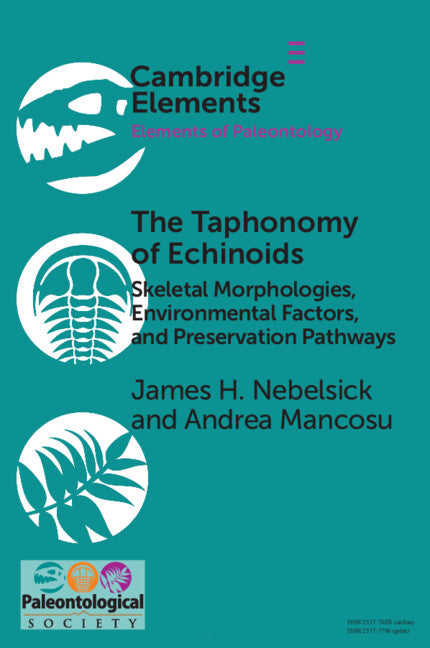Freshly Printed - allow 8 days lead
Couldn't load pickup availability
The Taphonomy of Echinoids
Skeletal Morphologies, Environmental Factors, and Preservation Pathways
Echinoid taphonomy biases are analyzed and contextualized with new studies and fossil taxa to aid further evolutionary and ecological study.
James H. Nebelsick (Author), Andrea Mancosu (Author)
9781108809993, Cambridge University Press
Paperback / softback, published 21 October 2021
75 pages
22.8 x 15.1 x 0.3 cm, 0.093 kg
The study of echinoid evolution, diversity, and ecology has always suffered from the fact that they are represented by taxa showing widely differing architectural designs of their multi-plated skeletons, inhabiting a large range of marine paleoenvironments, which result in highly varying taphonomic biases dictating their presence and recognition. This Element addresses the taphonomy of echinoids and includes: a general introduction to the morphological features of echinoids that play a role in their preservation; a review of processes which play an important role in the differential preservation of both regular and irregular echinoids including predation and transport; a summary of taphonomic pathways included in actualistic studies for recent sea urchins and then reconstructed for fossil taxa; and finally, a case study of the variation of echinoid taphonomy across a shelf gradient using the rich Miocene echinoid fauna of Sardinia.
1. General Introduction
2. Multi-plated Skeletons and Regeneration
3. Influence of Test Architecture and Environment
4. Predation and Parasitism as Taphonomic Agents
5. Preservation Pathways in the Recent and Past
6. A Case Study of Echinoid Preservation: The Miocene of Sardinia
7. Conclusions and Future Work
References.
Subject Areas: Palaeontology [RBX], Evolution [PSAJ], Life sciences: general issues [PSA], Biology, life sciences [PS]


